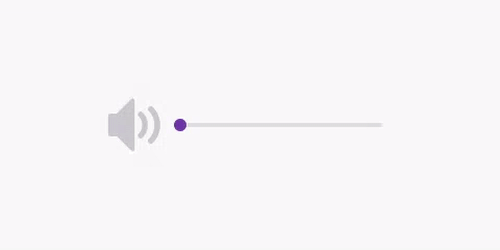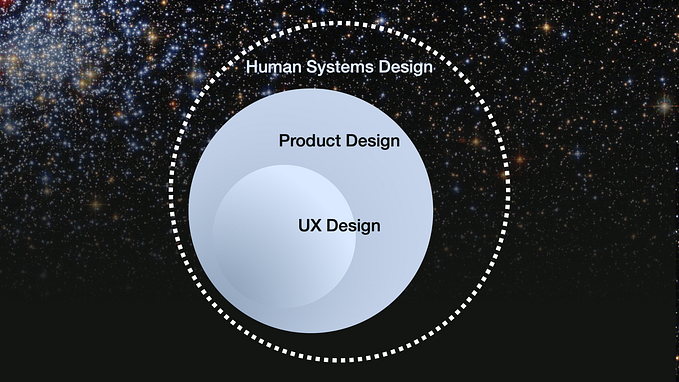Building a research mindset in UX: when cheat-sheets are not enough
To move beyond prescribed methods and build confidence in our UX research abilities, we need to understand what’s behind the scenes.
 There is no easy, fast-route way to learn UX Research. It’s brutal, I know. You can master some skills, be confident in applying some research strategies, follow a “cheat-sheet” to select some methods. But unless you understand the whys and hows of research, you will have difficulties in creating your own “recipes” for obtaining relevant user insights for each project you work on. Research can be extremely creative once you have a strong understanding of its potential. Its flexibility allows you to shape and mould each method to respond to your biggest, most pressing questions. And it’s worth the effort to master it, as it will have a spill-over effect on your design practice as well.
There is no easy, fast-route way to learn UX Research. It’s brutal, I know. You can master some skills, be confident in applying some research strategies, follow a “cheat-sheet” to select some methods. But unless you understand the whys and hows of research, you will have difficulties in creating your own “recipes” for obtaining relevant user insights for each project you work on. Research can be extremely creative once you have a strong understanding of its potential. Its flexibility allows you to shape and mould each method to respond to your biggest, most pressing questions. And it’s worth the effort to master it, as it will have a spill-over effect on your design practice as well.
The good news is that it’s not as labor intensive as it might sound. Think of all the energy you invest in scanning endless lists of “recipes for success”, while struggling to identify which one would fit best to your specific context. If you substitute part of that with a more sustainable approach to understand what’s “behind the scenes”, it would actually help you get there faster.
Find a way to get to the backstage and you will be on your way in building a research mindset, that is there to stick.
How does one start to build a research mindset?
1. Focusing on the “whys” and “hows” of using a process, instead of just using a checklist.
There is quite a vast literature on how to get started with a UX research process. But in most cases, the process of generating a research problem, objectives or research questions, for example, is briefly mentioned. I would assume this happens partly because some might think it’s common sense to be able to articulate questions (which is not — it takes practice). Or because we want to skip to the “action” and learn about the tools and methods — that’s where the interest lies. So most of these resources suggest readers to ask themselves “What am I trying to learn” and set “specific, achievable objectives”. Great! But strong research objectives don’t just happen.
Just as good design doesn’t magically appear after you sprinkle some UX fairy-dust on top of it, research objectives won’t surface without work invested into articulating them.
Formulating research objectives follows an underlying, often complex, system of structuring (and sometimes eliciting more) information. It’s iterative and often implies deconstructing and constructing concepts, based on analysis.
How to approach it? Find resources on what is the process of generating strong research objectives, in this case. If you have a more experienced UX researcher around, try to unpack these little aspects which most take for granted and ask them to walk you through their mental process of how they defined research questions. If that’s not accessible, throw a question on design Twitter or search resources online, but focusing on the meaningful inquiry of unpacking the process through which they emerge. Here is one example of an article approaching research objectives, with this process approach in mind.
2. Viewing research methods as elements on a spectrum (or areas) rather than pinning them down as “good for this”.
Often enough, the literature would offer you simplifications such as “if you have this problem, this research method solves it”, which is great. If the context they specify matches 1:1 your specific context, then you can definitely borrow the recipe and be good for bakin’. But what if it doesn’t? What if your specific research need is a bit more nuanced and you could combine two methods, for example, in one research stage? You would maximise insights while balancing resources.
A deeper understanding of research methods would focus on understanding their “area” rather than pinpointing them as a location on a map. It is highly limitative to box research methods and label them rigidly. Because they often intersect and even more often they can augment each other.
For example, an exploratory interview with a user, focusing on their end-to-end experience with booking a vacation with the kids, could potentially be augmented by a card sorting exercise to facilitate discussions. Maybe your main concern is not taxonomy or finding relations between concepts for an app’s navigation. But still, card sorting could help you facilitate communication with your respondent, elicit stories and uncover mental models. You use one instrument as a facilitator for the other.
So, how to get there? You can start with overviews or cheat-sheets as they provide orientation and help set the scene. But understand their limits in providing the in-depth insights needed for a research mindset. Don’t stop at the list — take each method to explore it in more depth.
Study each method as a living organism, with strengths and limitations, and focus on understanding their full potential.
There are quite a few great UX Research resources (books, articles). But in the attempt to simplify the process for ease of understanding, they tend to be a bit prescriptive. They recommend specific methods for specific goals or contexts, which might be limitative. So what to do? First of all, use a critical lens when reading the information. If someone states “this method is rubbish for this” try to look for additional information to understand “Why?” — in that way you uncover limitations in methods. Also if you find a method prescribed for a context, stop for a second and think creatively about “how can I use it in different ways?” — so you uncover strengths and potential.
Another way to approach it is to look for resources (also) outside of the UX realm to understand how more generic research methods work across disciplines (here is an open textbook from social work, for example). It will give you insights on the versatility of research methods. And once you have more clarity on their full potential, you will find that a well articulated research question will unleash a creative flow of methods you can mix and match to your needs.
3. Getting your head around the lingo: tomeyto, tomatho.
This might be the hardest part of all as I haven’t come across a strong glossary of UX Research terms (up to this point at least— please point me to any sources I have missed). Usability.gov offers a glossary which is helpful in UX overall, but quite limitative in terms of full research terminology. Similarly, UserZoom provides a more comprehensive dictionary of general UX terms, while UXMastery set up a collaborative initiative for a UX glossary. But no comprehensive glossary which focuses on research terminology. Plus, there’s the jargon.
What to do? Some more academic (text-book style) Human-Computer Interaction Research books (such as the one of Lazar et. al.) do a good job of listing key terms at the beginning of a chapter. Alternatively, you can look for sources within social science research to get some insights (here’s an example of a dictionary which helped me in my early years of social science research — but I am sure you can find others much more accessible).
And when you want to take a break from books, there are other ways, much more in-reach. A blog post or a presenter in a meet-up uses research goal and another one refers to research objective? Not quite sure how they are different from research purpose statement? Ask and engage in clarification discussions as sometimes we say the same things but use different words — or the same words to describe slightly nuanced issues. Environments such as conferences, meet-ups, Medium or Twitter, or even closer, your own team, are excellent for this. And long-term, this is the best way for us, as a community, to develop a shared language.
Whatever mechanisms you choose, a mindful approach of the terminology will help you in great ways. It supports assimilation of information as well as gives you the tools to further research a concept. At the most basic level it offers you specific, key terms for a google search, saving you loads of time next time you look for something.
4. Working the muscle of transversal skills
No, I am not talking about soft skills (even though those are essential in research too). I am referring to cross-discipline skills — the kind of things they didn’t use to teach us in formal school (at least in this lil’ corner of Eastern Europe). We constantly employ most of them in design already, but we can amplify them with a research mindset.
Core to our being is curiosity, and curiosity feeds on research. But curiosity, in turn, fuels research. Amazing little symbiosis.
Together with curiosity, critical thinking, analytical thinking, abstracting and generalising, conceptualising and formulating questions are all skills which are core to research, and improve design practices overall. Being able to stay focused and zooming in, but also being able to zoom out to see the big picture; structure and organisation, persistence, flexibility and an evidence-based approach; reflexivity, transparency, concern and respect for human participants. Last but not least, challenging yourself. They are all familiar as they strongly relate to our day-to-day design practices. But working on building healthy practices in all of these will definitely contribute to your research skills as well.
I don’t know any usability expert who doesn’t get bugged by poor design in doors, handles or the inefficient entry flow to their favourite concert. You start noticing these things even when you don’t want to. It’s exactly the same with the transversal skills inherent to the research mindset. Once you get the snowball running and you are comfortable with wearing the researcher hat, it becomes second nature. Things cannot be “unseen” and it will reflect in all your practices. So if you needed more skills to ruin a perfectly nice conversation at a dinner party, there you have it.
5. Taking every chance you have to practice. No chances? Make them.
You can have a strong grasp of the theoretical ins and outs of research but until you hit reality several times, it will be hard to anticipate all the situations which would need creative problem solving along the way. Until your recording device fails and you don’t have a backup, you can read 5 lists about how to prepare for an interview and you’ll still be likely not to carry a back-up.
You need to practice, but in a reflexive way. Reflect on your practices after each session and try to improve your skills for the next one.
Try to practice in safe environments first, with colleagues or under guidance (when possible) or take on smaller research tasks, until you build confidence. As a scuba diver, I know there is nothing worse than a panicked diver who does not reenter the water as soon as possible after a stressful experience — a bad experience can create adversity and prevent you from reattempting the activity. So you had a less-than optimal experience? Be kind to yourself. Then reflect on it, improve, and get back in the water as soon as possible, in a safe environment.
I have engaged with more than one product or UX design team which was frustrated that they don’t have the context to do user research. But do they advocate for research? Yes. Maybe. Sometimes. They used to, but after a few “nos”, not so much. And it is understandable to feel discouraged when the context does not help you. But persistence is key. Also being confident in your research skills can empower you to advocate for research in your working environment. Depending on where you work, there might be more or less UX maturity and awareness of research. Take on the challenge of being an advocate for user research in your setting and you might just be able to facilitate those contexts.
On the other hand, opportunities can also be created. Is your team working on an internal initiative? Jump in with a short proposal to do some research to help. I found out that people are usually open in taking the offer if it doesn’t affect the flow terribly or incur significant costs. I know it is less than ideal, but if you really don’t have other opportunities, it would be a guerrilla approach to increase research awareness in your community.
As UX Designers, we constantly embrace ambiguity and complexity. We are used to getting out of our comfort zone and diving into the unknown, iterating and approaching constraints as fuel for creative solutions. Developing a research mindset should feel exactly like that, and it’s natural to feel overwhelmed at times. Thus, finding strong coordinates (specific guides and cheat-sheets) could be a breath of fresh air, as they offer structure and comfort. But hanging around there for too long might be limiting. So take that deep breath of fresh air in, and allow yourself to drop the GPS again to explore in-depth, with an open mind, uncharted territories.









